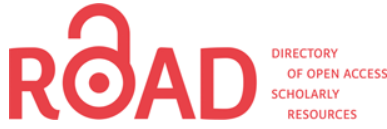Improving QoS in VANET
DOI:
https://doi.org/10.58564/IJSER.4.1.2025.290Keywords:
Vehicular Ad, Hoc Network, Routing protocols, QoSAbstract
The Vehicular Ad Hoc Network (VANET) is a novel and auspicious performance within the Intelligent Transportation Systems (ITS) field. Numerous scholars endeavoured to enhance the VANETs' Quality of Service (QoS) by creating routing procedures that were reliable, scalable, and efficient. One of the most significant issues of vehicular networks is building a routing protocol that guarantees a specific level of quality of service (QoS), as VANETs are distinguished by special properties, including constrained mobility, a very dynamic topology, and high node speed. For drivers to be able to make the right decisions, communication between vehicular nodes must be highly reliable. Link breakdown issues typically lower the quality of service (QoS) of a vehicular ad hoc network (VANET). This, in turn, lowers the following parameters that influence the QoS. This method depends on a for parameter Packet parameter of Delivery Ratio (PDR ), Packet Loss, Delay of End to End, and Throughput. The simulation results show that the proposal protocol has increased the longevity effectiveness of the network by around (PDR) 93%, Loss of packet 6%, (E2ED) 45.6 seconds, and Throughput 1500/ bps.
References
[1] F. Belamri, S. Boulfekhar, and D. Aissani, “A survey on QoS routing protocols in Vehicular Ad Hoc Network (VANET),” Telecommun. Syst., vol. 78, no. 1, pp. 117–153, 2021, doi: 10.1007/s11235-021-00797-8. DOI: https://doi.org/10.1007/s11235-021-00797-8
[2] A. H. Rasheed and M. Al-nouman, “RFID based Infrastructure to Vehicle Communication System for Road Sign Identification,” Al-Iraqia J. Sci. Eng. Res., vol. 2, no. 1, pp. 24–36, 2023, doi: 10.58564/ijser.1.2.2023.68. DOI: https://doi.org/10.58564/IJSER.1.2.2023.68
[3] X. (2011). M. A.-H. N. P. D. Wang and L. IntechOpen, “No Title”.
[4] Z. H. Jaber, H. A. Dawood, and M. J. Mohammed, “E-Learning Network System Design and Analysis,” vol. 0, no. 0, pp. 42–62, 2022.
[5] T. Chatterjee, R. Karmakar, G. Kaddoum, S. Chattopadhyay, and S. Chakraborty, “A Survey of VANET/V2X Routing From the Perspective of Non-Learning- and Learning-Based Approaches,” IEEE Access, vol. 10, pp. 23022–23050, 2022, doi: 10.1109/ACCESS.2022.3152767. DOI: https://doi.org/10.1109/ACCESS.2022.3152767
[6] A. Srivastava, A. Prakash, and R. Tripathi, “Location based routing protocols in VANET: Issues and existing solutions,” Veh. Commun., vol. 23, p. 100231, 2020, doi: 10.1016/j.vehcom.2020.100231. DOI: https://doi.org/10.1016/j.vehcom.2020.100231
[7] B. S. Yelure and S. P. Sonavane, “QoS Evaluation of VANET Routing Protocol,” in Proceedings of the 4th International Conference on Communication and Electronics Systems, ICCES 2019, Institute of Electrical and Electronics Engineers Inc., Jul. 2019, pp. 813–818. doi: 10.1109/ICCES45898.2019.9002115. DOI: https://doi.org/10.1109/ICCES45898.2019.9002115
[8] M. F. Khan, E. A. Felemban, S. Qaisar, and S. Ali, “Performance analysis on packet delivery ratio and end-to-end delay of different network topologies in wireless sensor networks (WSNs),” Proc. - IEEE 9th Int. Conf. Mob. Ad-Hoc Sens. Networks, MSN 2013, no. November 2014, pp. 324–329, 2013, doi: 10.1109/MSN.2013.74. DOI: https://doi.org/10.1109/MSN.2013.74
[9] N. H. Hussein et al., “SDN-Based VANET Routing: A Comprehensive Survey on Architectures, Protocols, Analysis, and Future Challenges,” IEEE Access, 2024, doi: 10.1109/ACCESS.2024.3355313. DOI: https://doi.org/10.1109/ACCESS.2024.3355313
[10] A. Behera and A. Panigrahi, “Determining the Network Throughput and Flow Rate Using GSR and AAL2R,” Int. J. UbiComp, vol. 6, no. 3, pp. 09–18, 2015, doi: 10.5121/iju.2015.6302. DOI: https://doi.org/10.5121/iju.2015.6302
[11] J. Toutouh, J. García-Nieto, and E. Alba, “Intelligent OLSR routing protocol optimisation for VANETs,” IEEE Trans. Veh. Technol., vol. 61, no. 4, pp. 1884–1894, 2012, doi: 10.1109/TVT.2012.2188552. DOI: https://doi.org/10.1109/TVT.2012.2188552
[12] A. Lakas, M. E. A. Fekair, A. Korichi, and N. Lagraa, “A multiconstrained QoS-compliant routing scheme for highway-based vehicular networks,” Wirel. Commun. Mob. Comput., vol. 2019, 2019, doi: 10.1155/2019/4521859. DOI: https://doi.org/10.1155/2019/4521859
[13] X. Wang, C. Liu, Y. Wang, and C. Huang, “Application of ant colony optimised routing algorithm based on evolving graph model in VANETs,” Int. Symp. Wirel. Pers. Multimed. Commun. WPMC, vol. 2015-Janua, no. c, pp. 265–270, 2015, doi: 10.1109/WPMC.2014.7014828. DOI: https://doi.org/10.1109/WPMC.2014.7014828
[14] W. Haiyan, Y. Hong, and G. Jingming, “Isolated small intestinal myeloid sarcoma 1 case,” Chinese J. Clin. Oncol., vol. 43, no. 11, p. 498, 2016, doi: 10.3969/j.issn.1000-8179.2016.11.302.
[15] L. Urquiza-Aguiar, C. Tripp-Barba, and M. A. Igartua, “A geographical heuristic routing protocol for VANETs,” Sensors (Switzerland), vol. 16, no. 10, pp. 1–28, 2016, doi: 10.3390/s16101567. DOI: https://doi.org/10.3390/s16101567
[16] A. Srivastava, S. Verma, Kavita, N. Z. Jhanjhi, M. N. Talib, and A. Malhotra, “Analysis of quality of service in VANET,” IOP Conf. Ser. Mater. Sci. Eng., vol. 993, no. 1, 2020, doi: 10.1088/1757-899X/993/1/012061. DOI: https://doi.org/10.1088/1757-899X/993/1/012061
[17] S. A. Rashid, L. Audah, M. M. Hamdi, and S. Alani, “An Overview on Quality of Service and Data Dissemination in VANETs,” HORA 2020 - 2nd Int. Congr. Human-Computer Interact. Optim. Robot. Appl. Proc., 2020, doi: 10.1109/HORA49412.2020.9152828. DOI: https://doi.org/10.1109/HORA49412.2020.9152828
[18] A. Debnath, H. Basumatary, M. Dhar, B. K. Bhattacharyya, and M. K. Debbarma, “A Routing Technique for Enhancing the Quality of Service in Vanet,” IETE J. Res., vol. 69, no. 4, pp. 2193–2206, 2023, doi: 10.1080/03772063.2021.1886879. DOI: https://doi.org/10.1080/03772063.2021.1886879
[19] A. Amaya, M. Fonseca, A. Pohl, and R. Luders, “Performance Assessment of DTN and VANET Protocols for Transmitting Periodic Warning Messages in High Vehicular Density Networks,” J. Commun. Inf. Syst., vol. 37, no. 1, pp. 91–103, 2022, doi: 10.14209/jcis.2022.10. DOI: https://doi.org/10.14209/jcis.2022.10
[20] C. Guo, D. Li, X. Chen, and G. Zhang, “An adaptive V2R communication strategy based on data delivery delay estimation in VANETs,” Veh. Commun., vol. 34, 2022, doi: 10.1016/j.vehcom.2021.100444. DOI: https://doi.org/10.1016/j.vehcom.2021.100444
[21] H. Khalfaoui, A. Azmani, A. Farchane, and S. Safi, “Using a Fuzzy-Bayesian Approach for Predicting the QoS in VANET,” Appl. Comput. Syst., vol. 27, no. 2, pp. 101–109, 2022, doi: 10.2478/acss-2022-0011. DOI: https://doi.org/10.2478/acss-2022-0011
[22] O. Rehman, M. Ould-khaoua, and H. Bourdoucen, “An adaptive relay nodes selection scheme for multi-hop broadcast in VANETs,” vol. 0, pp. 1–15, 2016, doi: 10.1016/j.comcom.2016.04.007. DOI: https://doi.org/10.1016/j.comcom.2016.04.007
[23] S. Zeadally, R. Hunt, Y. S. Chen, A. Irwin, and A. Hassan, “Vehicular ad hoc networks (VANETS): Status, results, and challenges,” Telecommun. Syst., vol. 50, no. 4, pp. 217–241, Aug. 2012, doi: 10.1007/s11235-010-9400-5. DOI: https://doi.org/10.1007/s11235-010-9400-5
Downloads
Published
How to Cite
Issue
Section
License
Copyright (c) 2025 Sukaina Hasan Mousa, Ruslan Saad Abdulrahman, Shams Mhmood Abd Ali

This work is licensed under a Creative Commons Attribution-ShareAlike 4.0 International License.
Deprecated: json_decode(): Passing null to parameter #1 ($json) of type string is deprecated in /var/www/vhosts/ijser.aliraqia.edu.iq/httpdocs/plugins/generic/citations/CitationsPlugin.inc.php on line 49










